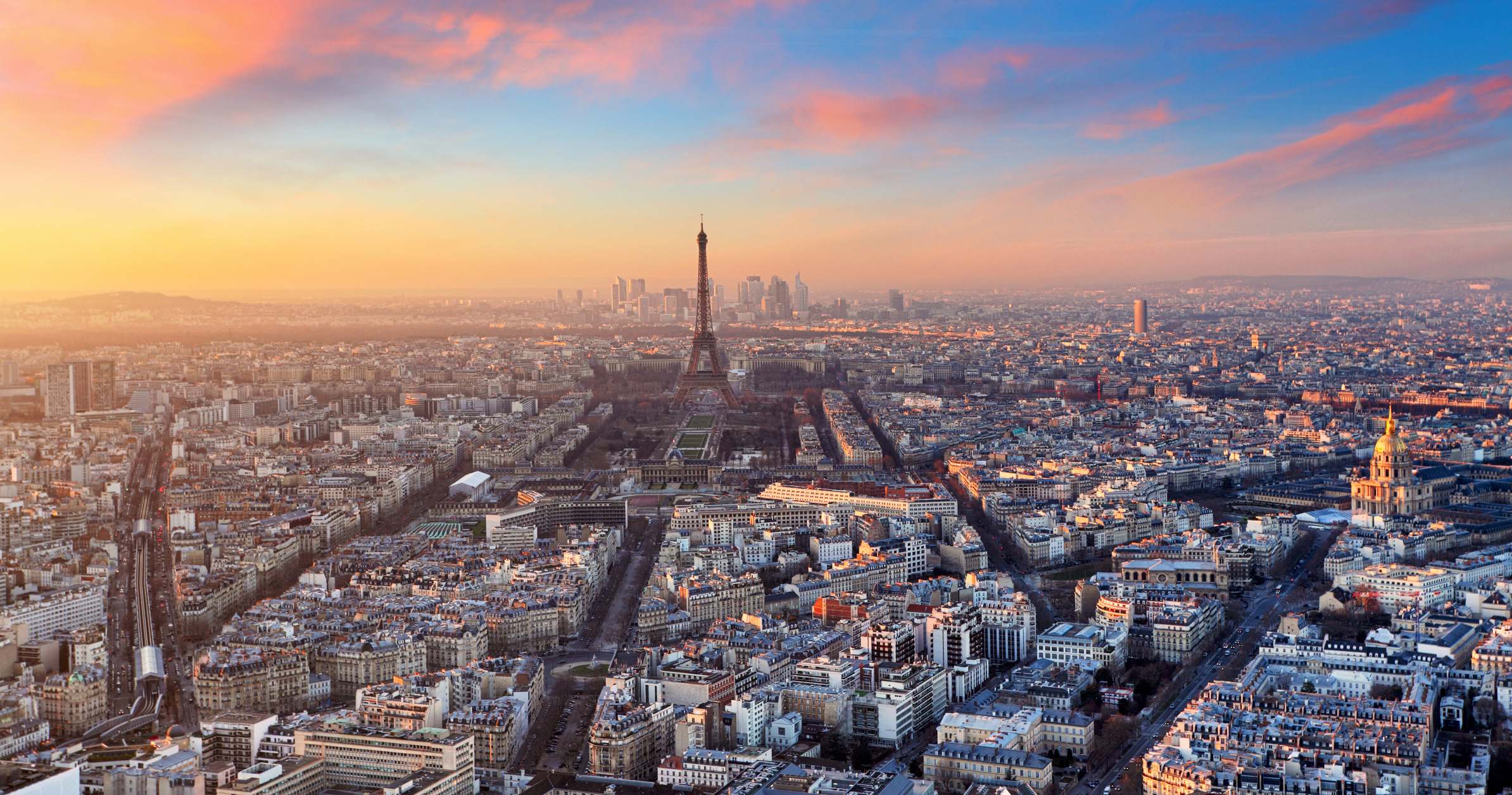HotStats' European Chain Hotels Market Review for the last month of 2016 painted an interesting portrait of how three cities on the continent fared in December. Paris is struggling in the wake of terrorist attacks and Vienna is having a hard time turning a profit—while Madrid, which was was suffering through a severe economic recession just a few years ago, is continuing its remarkable turnaround.
Paris
Overall, 2016 was not a great year for Paris, or for France as a whole. More than a year after terrorists in the French capital killed 130 people, hotels in Paris suffered a 40.2-percent year-on-year drop in profit-per-room in 2016 as top- and bottom-line performance was hit by a range of natural and man-made incidents. In July, French-based AccorHotels said that the company's net profit had dropped 23 percent to €74 million for the first six months of the year.
After the November 2015 attacks, Thomas Deschamps, the head of research at the Paris Tourism Office, told the New York Times that Paris’ businesses had recovered within two months after the January Charlie Hebdo terrorist attacks, aided by rising visits from American tourists, who were spending with a stronger dollar. The November attacks, he said, had a “deeper impact” because the targets—a theater and restaurants—are the types of places where tourists linger. “If there is a continuing drop in the hotel occupancy rate, then there are going to be repercussions for the luxury trade and the restaurants with fewer visitors,” Deschamps said at the time.

Year-on-year RevPAR fell by 15 percent in January 2016 alone, which led to a 51.1 percent decline in profit per room for the month. It was a sign of things to come.
Other incidents in Paris that affected hotel performance included flooding in June (-40.3 percent) and rail and air-traffic controller strikes in May (-37.1 percent) and September (-19.2 percent). Even hosting the UEFA Euro Championships in June and July didn't help much.
For year-end 2016, hotels in Paris recorded a 19.9 percent drop in RevPAR, which is as a result of an 11.3 percentage point drop in occupancy and a 5.9 percent fall in achieved average room rate, to €314.27.
French employment law has meant that cost cutting has remained challenging for hotels in Paris, illustrated by the 5.1 percentage point increase in payroll levels to 46.5 percent of total revenue for the year. As a result of the movement in revenue and costs over the last 12 months, profit conversion at Paris hotels has fallen to just 19.2 percent of total revenue in 2016, one of the lowest levels in Europe.
The City of Light did have its moments, however. Henderson Park, a London-based property firm, acquired Le Méridien Etoile (the largest hotel in Paris by room count) from U.S. group Mount Kellett Capital Management and U.K.-based Cedar Capital in November for a reported $390 million. Earlier in the year, InterContinental Hotels Group announced plans to open the first Kimpton hotel in Paris. The hotel, with 149 rooms and 27 suites, is set to open in 2020.
Vienna
As well as a 1.4-percent drop in total revenue, rising labor and overhead costs contributed to a 7.6-percent decline in profit per room at hotels in Vienna last year.
In addition to a 1.5-percent drop in RevPAR (in spite of a 0.3 percentage point increase in room occupancy), hotels in Vienna suffered declines in ancillary revenues, including Food and Beverage (-0.5 percent) and Conference and Banqueting (-7.4 percent), which contributed to the 1.4 percent decline in TrevPAR (Total Revenue per Available Room), to €172.48 in 2016.
Furthermore, recent increases in costs, which have included a 5.3-percent increase in overheads and an 8.2 percent increase in payroll in the 24 months to December 2016, have eroded profit levels.
The profit decline at Vienna hotels in 2016 was all the more disappointing as it was in contrast to the strong growth in profit per room in both 2014 (+12.5 percent) and 2015 (+24.8 percent).
Madrid
Of the three cities profiled in the report, the clear winner is one that had, not so long ago, been struggling. But Madrid's resurgence isn't all that surprising: Earlier this week, we noted that, following the Brexit in the UK and terror attacks in France and Belgium, travelers and investors alike are betting on Spain.
The country's numbers have been solid for a few years now, and December was no different. A 19.6-percent increase in profit per room that month helped hotels in Madrid reach an overall 3.8-percent increase in gross operating profit per available room for 2016.
It wasn't all great news, though. The growth in GOPPAR in December was in contrast to a 0.9 percent decline in RevPAR for the month, which was suffered as a result of a 6.8-percent drop in achieved average room rate, to €126.68.
Despite a strong first half of the year, during which a 6.9 percent profit per room increase was fueled by RevPAR growth of 2.7 percent, hotels in the Spanish capital have struggled to maintain performance in Q2 2016 and suffered several months of major profit decline, including a 13.6-percent year-on-year drop in October.
But still, cost savings in December contributed to cost savings for year-end 2016, including labor (-2.3 percent) and overheads (-4.5 percent) on a per-available-room basis and—as a result—hotels in Madrid recorded a third consecutive year of profit increase in 2016, further to the growth in 2014 (+19.7 percent) and 2015 (+27.4 percent), with pre-recession profit decline now a distant memory.
